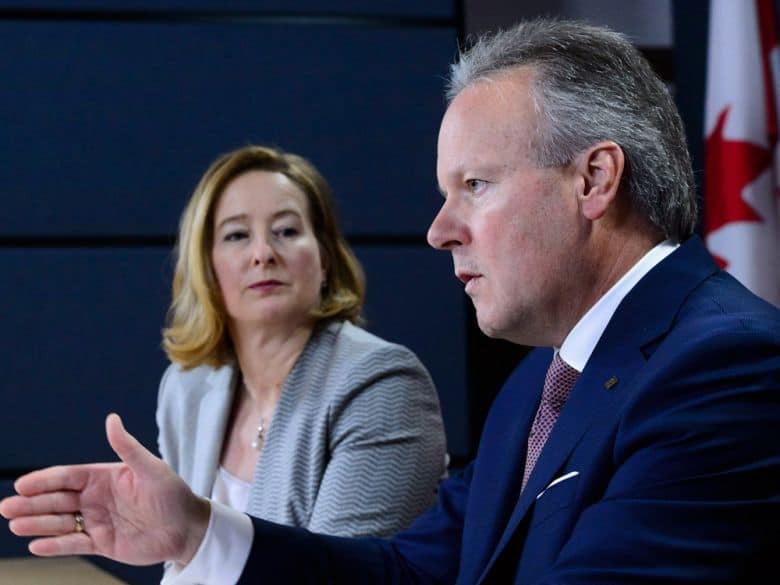
There are about three million Canadians working today who have no idea what real inflation looks like.
Since the mid-1990s, the Consumer Price Index has stayed pretty close to the Bank of Canada’s rough target of two per cent. That remained true in October, when the CPI was 2.4 per cent higher than a year earlier, Statistics Canada reported on Nov. 23. The “core” measures that policy makers created to remove noisier components of StatCan’s price basket were even closer to the bull’s eye, suggesting the central bank will carry on with its plan to raise interest rates as fast as economic conditions allow.
The newest members of Canada’s labour force — ages 15 to 24 — might be wondering what the fuss is about. Their parents and grandparents could tell them stories about how miserable life could be before heroes such as Paul Volcker, the former head of the U.S. Federal Reserve, and Gordon Thiessen, the Canadian central banker who introduced the current price-targeting regime, slew the inflation dragons.
But their own experience with central banks likely has been negative. The only price spikes they will have experienced are those being caused deliberately by Stephen Poloz, the current governor of the Bank of Canada, and his deputies on the Governing Council: StatCan’s measure of mortgage-interest costs rose seven per cent in October from a year earlier, compared with an annual gain of 3.8 per cent as recently as May.
As far as some of these kids are concerned, Poloz is denying them a home. And for what? An economic indicator that never moves. The central bank is facing a test of its credibility, and it knows it.
“When you are in the ’70s and the ’80s, and you see inflation, and that’s a dragon to slay, then everyone doesn’t like it, but they are behind you when you raise interest rates to achieve it,” Carolyn Wilkins, the senior deputy governor, said at an event hosted by McGill University’s Max Bell School of Public Policy on Nov. 20. “Once you are there, it kind of looks like a really silly thing to pursue,” she continued. “If you do your job well, people will think, ‘Why are you raising interest rates? There is no inflation.’ That’s because you do your job well.”
After a decade of extraordinary displays of financial alchemy, the central bankers are ready for things to get back to normal. The Fed is leading the way, having raised interest rates eight times since the end of 2015. The Bank of Canada is a few steps behind with five increases since July 2017. Dana Peterson, an economist at Citibank in New York, thinks Poloz and his lieutenants will leave the benchmark rate unchanged at their last policy meeting of 2018 on Dec. 5, and then lift it another quarter point, to two per cent, in January. That still would be low by historical standards, but it would be the highest since before the Financial Crisis. History means little if you’ve built a life around borrowing money for almost nothing.
“If you do your job well, people will think, ‘Why are you raising interest rates? There is no inflation.’ That’s because you do your job well”
– Carolyn Wilkins, deputy governor, Bank of Canada
That’s one of the reasons the central banks’ shift to normalcy is meeting some resistance. Greg Ip, a columnist at the Wall Street Journal, recently wrote about “QE babies,” the cohort of traders who never has worked in markets that weren’t being juiced by the Fed’s bond-buying policy known as quantitative easing. Those novice Masters of the Universe are therefore trembling at the site of higher interest rates.
At the same time, the embrace of inflation targeting by central banks is being second-guessed by some of the oldsters who were around when it happened. Volcker, who left the Fed in 1987, wrote in a commentary for Bloomberg News on Oct. 24 that he knew of no “theoretical justification” for basing monetary policy on achieving inflation of two per cent. Diane Bellemare, a senator from Quebec, asked Poloz and Wilkins on Oct. 31 whether they thought the central bank should also target jobs. David Romer, a famous economist at the University of California, Berkeley, informed an audience in Ottawa on Nov. 1 that early results of one of his current research efforts suggests policymakers could achieve better results by targeting economic forecasts.
“The case for inflation targeting no longer is clear cut,” Romer said at a conference hosted by the Bank of Canada. Rather than simply defend their current regimes, central banks should have the courage to prove there is no better way to determine where to set interest rates, Romer said in front of most of the Canadian central bank’s leaders.
Canada was among the first to adopt inflation targeting after years of exhaustive study by the best economists at the central bank, including a young researcher named Stephen Poloz. His response to the inquisition of a policy that he helped create? The most ambitious review of the Canadian monetary policy since the current regime was implemented back in 1992.
The Finance Department renews the Bank of Canada’s mandate every five years; the next renewal scheduled for 2021. Wilkins said at McGill that the central bank would use that time to conduct a “horse race” between inflation targeting and various contenders, including a dual mandate that would put jobs on an equal footing with inflation. Officials will be partial to the horse they know, but Wilkins insisted they are open to being persuaded that there could be a better way.
In the meantime, the central bank faces a more immediate challenge: teaching a new generation that runaway inflation is more than a fairy tale. “We’ll have to find different ways to explain it,” Wilkins said.


